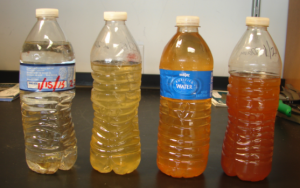Flint’s Water Crisis Settlement Plan Now Grows to $641 Million

by Zimu Zhang, Fordham Environment Law Review Staff
The beginning of the water crisis in Flint, Michigan can be traced back to April 2014, when the officials, out of a cost-cutting consideration, decided to switch the city’s water supply from the Detroit Water and Sewerage Department to the Karegnondi Water Authority. Before the switch took place, the city turned to the Flint River as a temporary water source, but the residents soon began to complain that brown water was flowing into their homes. Shortly after, E. coli and coliform bacteria were detected, and a leaked memo from the Environmental Protection Agency also revealed dangerous levels of lead in the water. Along with other harms, lead exposure is known to be particularly dangerous to children. It can seriously damage the brain and nervous system and can cause learning as well as behavior problems.
The officials ultimately decided to switch the water supply back, but the pipes had already been damaged, and the city had to replace around 30,000 lead pipes. During that time, residents could not use the water that came out of their pipes. Over a year later, people still needed to use bottled water. In November, a class-action lawsuit was filed by the Flint residents, resulting from this shocking lead contamination water crisis.
Later, Flint agreed to settle with its residents with a massive settlement plan, with a preliminary settlement amount valued at $600 million. However, the city decided to join a motion to approve the settlement, along with McLaren Regional Medical Center and city contractor Rowe Professional Services Company. Therefore, with $20 million contributions from Flint and McLaren Regional Medical Center and $1.25 million from Rowe Professional Services, the settlement amount now reaches $641.2 million in the updated agreement.
The updated settlement plan has been filed but is still contingent upon its approval by the court. Although claims cannot be registered yet, if the plan is approved, its hybrid structure will allow minor children who were poisoned to directly register for payments and adults who have retained their own counsel to proceed individually. In addition, the plan reserves nearly 80 percent of the funds for people who were children when the crisis happened.
According to the proposed documents of the plan, upon its approval, people and businesses will have a number of claim categories to choose from. However, according to the document, registration will not guarantee payment. In order to receive payment, people who have registered also have to file documents to support their claims based on the claim category(ies) they have selected. Further, according to the document, except for “Future Minor Sub-Qualified Settlement Fund Claims,” the actual dollar amount being awarded will be determined by the Claims Administrator after processing all claims.

